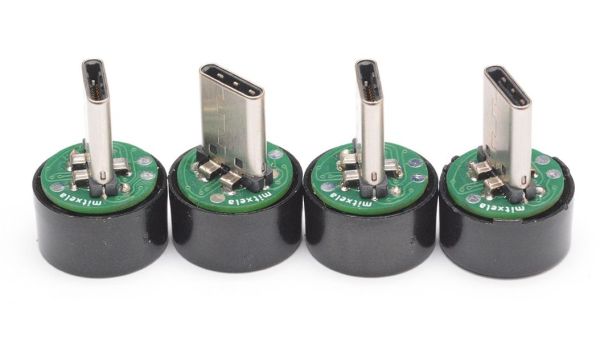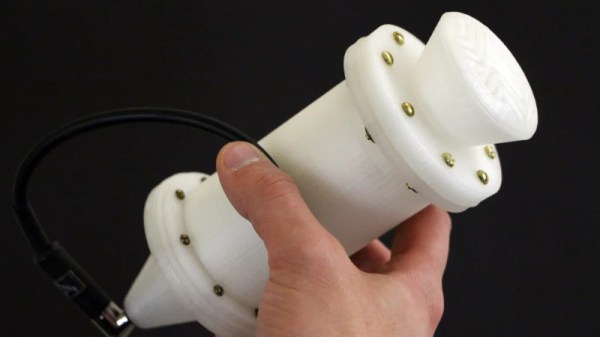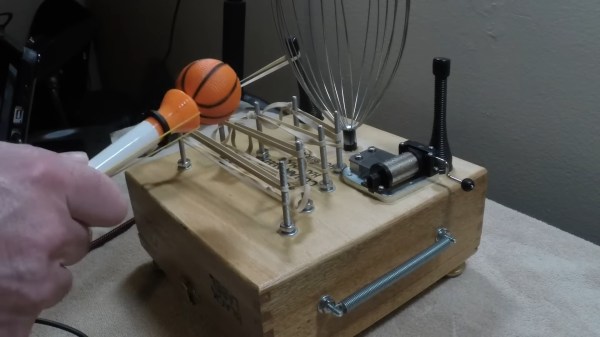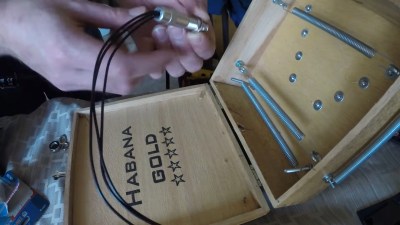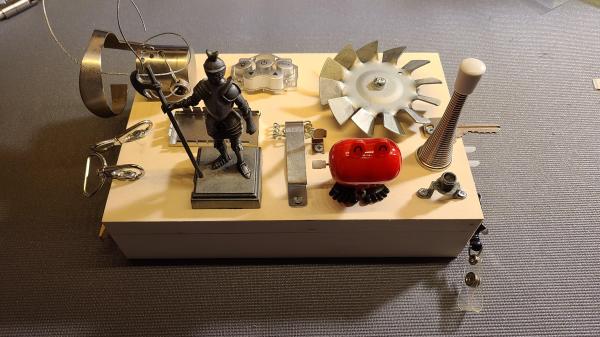The humble piezo element is often used as little more than a buzzer in many projects. However, you can do more with them, as [Something Physical] demonstrates with their nifty piezo noise box. Check out the video (and audio) below.
The construction is simple enough, attractive in its own way, with a rugged junk-assembly sort of style. The video starts out by demonstrating the use of a piezo element hooked up as a simple contact microphone, before developing it into something more eclectic.
The basic concept: Mount the piezo element to a metal box fitted with a variety of oddball implements. What kind of implements? Spiralled copper wires, a spring, and parts of a whisk. When struck, plucked, or twanged, they conduct vibrations through the box, the microphone picks them up, and the box passes the sound on to other audio equipment.
It might seem frivolous, but it’s got some real value for avant-garde musical experimentation. In particular, if you’re looking for weird signals to feed into your effects rack or modular synth setup, this is a great place to start.



